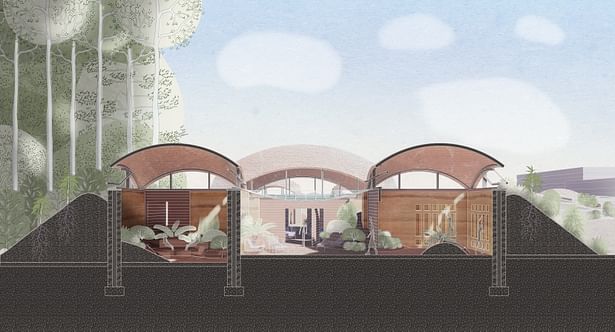

Stringent safety regulations, the drive for maximum productivity, and pre-existing bodies of knowledge have resulted in the creation of a new typology—the cannabis cultivation park, a permutation of the office park exemplified in the derelict IBM Kingston campus. Despite cyclical changes in the economy, individual industries and land use, a data-centric, corporatized epistemology is instantiated in both the obsolescent architecture of IBM’s abandoned campuses and in the emerging cannabis cultivation facilities. In response to these spatial practices and structural inequities in the nascent cannabis industry, we propose the creation of a new typology and a new form of organization: a co-cooperative model that will also provide vocational and educational programs for people formerly incarcerated for possession of marijuana.
More than a set of buildings, we call for an expansive process of vaccination, remediation, construction, cultivation, and rewilding that becomes an alternative to current modes of production. The project accomplishes this in two principal ways: first, by remediating the former IBM site in Kingston, reversing the pollution from the ruins of this corporate landscape; second, by redressing past wrongs and allowing minority populations affected by the “war on drugs” active participation in the ethical production of cannabis. The remediation processes that accompany the production of cannabis provides the building blocks for the proposed landscape and architecture.
In the very distant future, a clean site, which will have allowed the production of cannabis for many years, will return to nature in the form of a ruin. In essence, we propose a paradigm of production that, rather than extend racist practices and extractive logics, predicated on models of infinite growth, also becomes a generator of justice and an ecologically productive part of the environment, inherently limited in space by the confines of past industry and temporally by natural cycles of healing and growth.
Status: School Project
Location: Columbia GSAPP
Additional Credits: Completed in partnership with Zakios Meghrouni-Brown & Jules Kleitman



